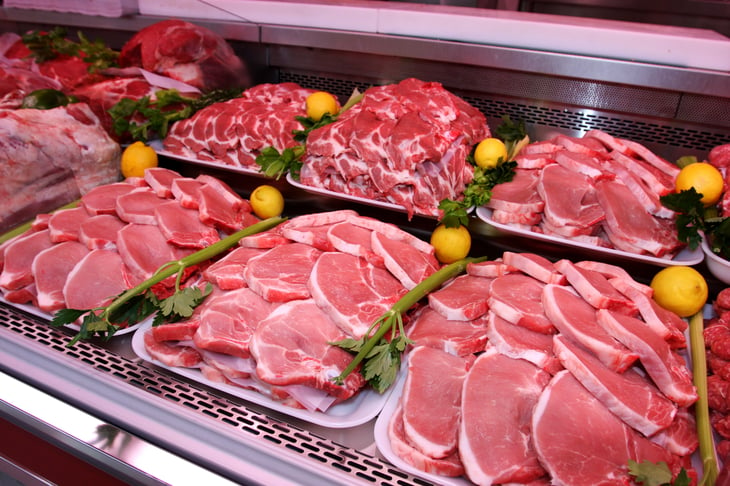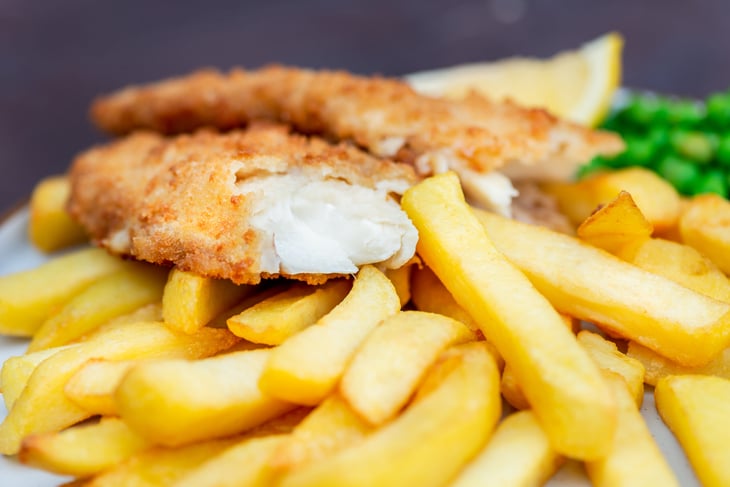
It’s true your body needs a minimum amount of sodium to maintain fluid balance, healthy nerve function and muscle contraction, but most Americans will never have to worry about a sodium deficiency. In fact, you should be significantly more concerned about getting too much of a good thing.
Americans consume an average of more than 3,400 milligrams of sodium per day. These numbers far exceed the recommended limit of 2,300 milligrams of sodium per day. Why is this so worrisome?
The American Heart Association explains that excess sodium pulls water into your blood vessels, which increases the total volume within those vessels; thereby increasing the total pressure. As you probably know, increased blood pressure is one of the major risk factors for heart disease.
Even if high blood pressure runs in the family, you can reduce your risk by assessing what you eat and finding smart ways to cut salt from your everyday diet. No need for a total overhaul. Small, gradual changes tend to be the most sustainable.
Cutting down on salt may not free your mind of worry, but your body will certainly be healthier for it. Check out the following tips to reduce your salt intake, pick one or two ideas that seem most feasible for you and start there.
1. Look at nutrition labels

The “Nutrition Facts” panel on food packaging tells you exactly what you’re getting — and how much you’re getting — from that particular food. You’ll find important information such as calorie content, grams of carbohydrates and sodium supply.
In fact, there’s a separate line for sodium that shows you the number of milligrams and the “% Daily Value,” or how much those milligrams contribute to the recommended daily limit. The Food and Drug Administration (FDA) recommends choosing foods that provide 5% Daily Value or less of sodium per serving.
2. Understand packaging claims

You may see a food labeled “low sodium” or “reduced sodium.” While these seem synonymous, each packaging claim has a specific definition, based on the FDA’s guidelines.
For instance, “low sodium” means the product supplies 140 mg of sodium or less per serving. You will, of course, have to calculate how many servings you consume in order to determine the total amount of sodium. “Reduced sodium,” on the other hand, means that version of the product contains at least 25% less sodium than the regular product. Also, be mindful of “no-salt-added” or “unsalted” claims. These products don’t have salt added during processing, but that doesn’t necessarily mean they’re “salt free.”
3. Buy fresh meat

According to the Dietary Guidelines for Americans, sandwiches make up 21% of Americans’ sodium intake. The processed meats and cheeses that typically go on sandwiches are the primary offenders.
Processed meats include any meat that has been preserved by smoking, curing, salting or using some other chemical additive. Not only are these meats high in sodium, the World Health Organization has deemed processed meats to be carcinogenic.
This doesn’t mean giving up your favorite sandwiches. Instead, buy fresh meat, poultry or seafood and slice it up yourself. You can also explore the options in “8 Easy Ways to Cut Back on Meat.”
4. Eat more whole fruits and vegetables

Fresh, whole fruits and vegetables are considered to be very low in sodium or even classified as sodium-free.
By filling your plate with these whole foods, you leave little to no room for the packaged and processed alternatives that supply excessive amounts of sodium. Not to mention, fruits and vegetables provide an array of nutrients that help lower the risk for several chronic diseases.
5. Rinse canned and frozen food

Canned and frozen produce are healthy alternatives for your body and your budget. However, these foods tend to be higher in sodium, because salt helps preserve freshness.
The good news is you can effectively reduce the salt content of these foods by simply rinsing them under cold running water before cooking. It won’t get rid of all the salt, but every little bit helps.
6. Cook more often

One of the best ways to control your salt intake is by cooking your meals from scratch. You’re more likely to use fresh foods and limit salty packaged stuff.
Just remember, the recommended daily limit for sodium is 2,300 mg, which is only 1 teaspoon of salt. If you’re not sure what that looks like, be sure you’re measuring every “pinch” of salt you add to the pot.
7. Season with herbs and spices

While salt acts as a flavor-enhancer, there are plenty of other ways to season your food. Herbs and spices not only offer a greater variety of flavors, but also enhance the intensity of those flavors without adding a lick of salt. Don’t feel like you’re tied to fresh herbs and spices. Pre-mixed, salt-free blends, such as those from Mrs. Dash, are cost-effective and convenient.
That said, still read the labels. Many salt substitutes are enriched with potassium, which may be counterproductive to your nutritional needs. The National Kidney Foundation says, “People living with kidney disease are at risk for having potassium levels outside of the goal range” and may need to watch their potassium intake.
8. Ask for condiments on the side

Consider the fact that 1 tablespoon of ketchup can provide 180 mg of sodium and just 2 tablespoons of classic ranch salad dressing offer about 260 mg of sodium.
When you order a burger with side salad at a restaurant, you have no idea how many tablespoons the chef will add to your meal — and those numbers can quickly add up. Ask for condiments, sauces and dressings on the side, so you can decide how much you’ll use and, ultimately, how much salt you’ll consume.
9. Reduce the size of your meal

Without swapping ingredients or altering recipes, you can cut back on salt by cutting back on your portions. The less total food you eat, the less total salt.
This is especially useful when you eat out. As soon as your meal is delivered to the table, ask your server for a doggie bag. Place half of your plate in the take-home container, wrap it up and set it aside, so you only eat the portion left in front of you.





Add a Comment
Our Policy: We welcome relevant and respectful comments in order to foster healthy and informative discussions. All other comments may be removed. Comments with links are automatically held for moderation.